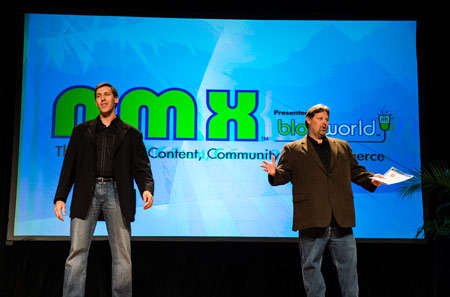Social Content Marketing
Content inspires referrals, social actions, and sales.
Optimize for long tail topics to improve SEO.
Content is an equalizer between large and small businesses – anyone can produce quality content!
Do some research to understand what your audience needs, and try not to just start writing without an end goal in mind.
Don’t “publish and pray” – promote your stuff! Promoting does not mean copying the link into Facebook and Twitter, or telling your friends. That is not promotion.
Don’t write without knowing why, for whom, and what outcome you want from the article.
Content marketing isn’t about you, it’s about what your readers get out of the deal.
Understand how your audience discovers new information by using Google Analytics, and then make sure that they can consume your content via these mediums.
How do readers consume your content? What devices? What types of posts?
What can you do to motivate sharing and to make it easier?
Who are you writing for?
Find your audience’s Preferences, Pain Points, and Behaviors.
What do they care about?
What stories will connect you?
Use social networking, SEO networking, and PR services if you need to.
Why are you creating your content? Have a clear audience and purpose in mind each time you put together a post.
Specificity is very important for SEO – make sure to organize your posts into categories.
Readers don’t know you even exist – what will they be searching, and how can you build your content around that?
He shared these 30 Content Marketing Tips.
Try using a keyword matrix
1 2 3
a
b
c
Don’t connect networks to each other, but connect your content to individual networks.
do you have any tips for getting looks from StumbleUpon users, apart from having quality content, which is a given? And is that traffic meaningless? Are you able to retain that traffic?

Blog Critique Workshop – Derek Halpern and Chris Garrett
My blog, Cool Gizmo Toys, was lucky enough to be chosen by Derek and Chris to be critiqued at the workshop! (Note that I’ve taken their tips into account and that it looked much different a day or two ago.)
Three things that every visitor should be able to answer:
Where am I?
Why should I care?
What should I do next?
Add a tagline to the header that answers the question “why should I care?” at least partially. Make the tagline specific.
Add more to the subscribe form, and never ever ever use the word “subscribe” on your button. Say “sign up” or “join.”
Don’t give people too many options – if you do, they’ll just get overwhelmed and not click on anything.
Focus on one or two social networks – you don’t need to be present everywhere.
Derek Halpern even suggests that you don’t need social media buttons at all, but Chris Garrett disagrees, but agrees that they should be small and not taking away from what you really want readers to do: subscribe.
“Negative social proof” – if you don’t get a lot of sharing on certain networks, then take off those buttons.
Don’t display dates in the url or on the site next to the posts.
Don’t talk about yourself in the About page – let readers know how your content is going to help them, not you.
Clicking text and reading text should always be two different colors.
7 Facebook Marketing Tips
Add a subscribe button to your Facebook.
Draw attention to custom Facebook apps in your timeline cover photo.
Cover image – 851 x 315 pixels
Profile image – 160×160 pixels
Facebook’s rules for the timeline cover photo –
No price or puchase info
No contact info
No reference to like or share or whatever
No calls to action
No promotions, coupons, or ads
Cover photo should not be primarily text based
Remember: most people are on Facebook to have fun!
Create a custom app strategy.
Use Lujure to create said custom app strategy.
Custom Fan Page Designs
Thumbnails for apps – 111×74 pixels
Facebook rule: no thumbnails for photos, videos, notes, likes, or events
Use these features on your page:
Pinning and highlighting
Scheduled post
Promoted posts
Always have a call to action in any posts that you pin up (pins last for 7 days).
Highlighted posts stretch across the top and take up more space, increasing visibility.
Use the model: if you want “x” just say YES and hit the LIKE button
8 Models for Community
There are many types of membership sites.
Focus more on HOW EASY it is to access content than the content that you put on a paid membership site.
1. Publisher model
It’s like a magazine – fresh new content, regularly updated, people who join get total access.
2. UPS Model
It’s a package of content with monthly access.
3. Modular course
Delivered once per month, and members have access to only one mod at a time.
Example: Web Art Academy
4. Protected download
Deliver digital goods, and have a download page for each product.
5. Protected forum
There’s no content, but you’re providing a central site for discussions.
You must be a member to chat, and you get total access.
6. Private Members Area
It’s not always content – this can be resources, one on one communication, or other things.
7. Coaching site
Basically a site where you offer one-on-one coaching for a monthly fee.
8. Combo Model
Any combination of the above! (My favorite).
Disclosure: We might earn commission from qualifying purchases. The commission help keep the rest of my content free, so thank you!



